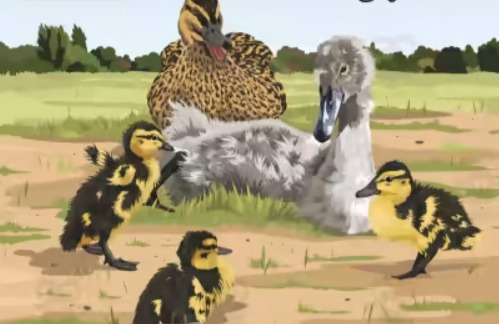I don’t think there’s a single subject in the curriculum where it isn’t useful or not necessary to be able to explain a thought or conclusion clearly and logically. It is even more important for students to be able to trace their reasoning and set it out clearly. This is what CER is all about.
In this post, you will learn what CER is and some useful ways to approach it in the classroom.
What is CER?
CER stands for CLAIM EXPLANATION REASONING. It’s a strategy to help students learn how to construct paragraphs that present a convincing argument for a statement.
The paragraph will follow a specific structure:
Claim
The result, observation and conclusion must be stated.
Explanation
The claim must be explained in some detail.
Reasoning
The step-by-step process that led to the claim must be clearly articulated.
Table of Contents
- What is CER?
- When is CER used?
- How to write a CER paragraph
- Strategies for teaching CER
- Journalling
- CER Resources
- CER FAQs
- Final thoughts on CER
When is CER used?
In science
CER is commonly used in science. It is specifically taught as an approach to writing up lab experiments. The idea is that students will observe the experiment and identify the answer to a hypothesis, or to a question.
In the lab, evidence and logic are necessary to prove a claim. Students should be able to observe an experiment and state what the outcome is. They are then expected to explain it in a bit of detail.
If your students identify the result on an experiment, you’ll most probably find that they are quite capable of explaining it in a bit of detail. It is when they need to articulate how they got to the answer that they fall down.
This is what CER helps them to do.
In other areas
Quite a lot of science can be relatively non-concrete or specific. The students have to work with hypotheses and experiments to demonstrate or prove something. This can pose challenges for CER.
Teaching CER is about technique. For this reason, don’t think you have to dive into science immediately. You can use other more concrete examples that they can respond to with confidence quite immediately. The focus becomes on writing the explanation and tracing the steps of the reasoning.

How to write a CER paragraph
Teaching the technique of writing CER doesn’t need to be complicated. Rather, begin simply.
You should teach your students that the trick to writing a CER paragraph is to ask the correct questions:
WHAT (is the conclusion you have come to, or the observation you’ve made)? (Claim)
WHY (did you make this decision)? (Explanation)
HOW (did you get to this answer)? (Reasoning)
Practical example
Take this picture as the starting point:

1. Ask the students what is going on in the picture.
They may answer something like: The girl in the middle definitely knows the answer.
2. Then ask them why they chose that caption.
The answer could be something like: These kids are in the classroom because they are sitting at desks. Their hands are up, which shows they are answering a question. Her hand is straight up, showing she is confident.
3. Then ask them how they got to that answer.
The answer could be something like: The kids are in a classroom because there are desks and chairs. They are each sitting at their own desk. I can see bags on the back of the chairs. Usually, kids bring book bags to school. There is also a chalkboard behind the teacher, who is standing in front of the class, looking at them. This suggests she is asking a question. The kids also have their hands up, which shows they want to say something. It’s most likely that they are answering a question. The girl in the middle has her hand up straight, showing confidence. She is the only part of the photograph that is in focus. She is also in the center of the picture. This makes her stand out, so we can assume she is the one who knows what the answer is.
Strategies for teaching CER
Of course, there are lots of ways of teaching students to master CER.
Non-science example
It is effective to begin the process of learning to write CER paragraphs with something not science-related. A great starting point is a fairy tale.
For example
Begin by showing the students this picture:

Claim
Ask the class what fairy tale this could be.
Then, guide them to make a claim about the picture.
This is an illustration of the story, ‘The Ugly Duckling’.
Explanation
Now ask the students to explain why the statement may be true.
I can see five birds in the picture. The big one is the mother, while the three small ones are her ducklings. The white bird is the Ugly Duckling.
Reasoning
Explain to the students that they need to explain how they got to their claim.
The picture is of five birds. There is a large bird with a flat bill, so it must be a duck. There are three smaller birds that have a similar bill. They are fluffy, which means they are young. The shape of their faces is like that of the big bird. They must be her ducklings. The white bird is with the mother duck and her ducklings, but they don’t look scared of it. It is fluffy, so it is also young. It’s obviously out of place, though. There is a fairy tale that tells the story of a bird born into a duck family, but it is bigger and doesn’t look like its siblings. It is called the Ugly Duckling. The details of the picture are the same as the story. This means the picture is an illustration of the fairy tale.
Teamwork
Learning to write a CER paragraph means that you have to think carefully about the source to be able to make a claim about it. You then need to explain why you made the claim. Finally, you need to give a logical account of the steps you took to work out your claim.
You can get your students to do the process on their own, or put them into teams to work on the CER.
Non-scientific example
Let’s assume you are teaching a Grade 10 or 11 class for English Lit and they have read Amadeus by Peter Shaffer and Othello by William Shakespeare.
Begin the process by making a statement, such as:
In ‘Amadeus’, Peter Shaffer has created the most manipulative villain in Salieri since Iago in ‘Othello’.
Divide the class into groups. Task the groups with explaining the statement.
The students will need to work as a team. You could advise them to divide up the work. Two students should research Salieri and two should tackle Iago. Explain that they are looking for evidence to prove the claim.
When the pairs have gathered information, they must all work as a team to formulate their explanation for why the claim is accurate.
Scientific example
Present your Grade 11 class with the results and conclusions of a science experiment. It would work well if it’s an experiment linked to what they have done in class.
Divide the class into groups. Each group must work together to make a claim about the experiment.
Collect the written claims and redistribute them among the groups. Now, each team must work together to decide if they agree with the claim another group has made and explain why.
Ideas for teaching CER
There are possibly as many ways of teaching CER as there are teachers to imagine them. Here are a few approaches you can at least begin with.
Videos
Videos are a great concrete source for an exercise in writing CER, although the moving images and the sound can be a bit challenging.
What is useful is that all the evidence for the explanation and the relevant points are in the video itself.
Commercials are a good option when it comes to using videos, but you can also use something from TikTok, or other social media. It can be fun to use a video that the students have made themselves.
Lab process
Perhaps the most obvious subject matter for learning CER is science. After all, CER is a technique that is used to write up responses to something like a lab process.
I suggest beginning a lesson on CER by using an existing experiment for the student to work with. This means they are dealing with something relatively concrete. You can focus on guiding them to make a claim about the experiment, and then work on the explanation and reasoning.
When the class is familiar with the technique of CER, move on to guiding them to work on writing up an experiment that they have done themselves. This brings the whole experience closer to home, as they need to go back into what they did to reach a result as the basis for their reasoning.
Socratic classes
A Socratic approach to teaching can be quite demanding on the students, so it is best suited for Grades 10-12. I
The approach to teaching is based on the principle of asking questions continually until the desired result has been reached. It is also an excellent way to involve the whole class and to make sure that everyone contributes.
To teach the students about CER, use the Socratic method based on an image or a statement.
You can use something like:
The entire space program is a colossal waste of money.
Identify individual students to answer targeted questions. From their responses, build up the explanation and then the reasoning on the whiteboard.
You will need to work on keeping the questions in order, so that the explanation is built up logically and the reasoning goes step-by-step. However, if there is a response that should belong earlier in the writing, then add it in where it belongs. If you have a smartboard, it is easier to cut and paste into the paragraph as you work.
Whiteboard
You can make good use of the whiteboard in your class to teach CER.
For example, let’s say you are going to teach how to build up an explanation from evidence.
Write a statement on the board, such as:
Social media are/are not the cause of the break down of communication in families.
Explain to the class that this is the claim.
Elicit answers from the class to build up an explanation of the claim. Write the points on the whiteboard.
Make sure the students know that they don’t have to agree with the statement. This is an exercise in working at justifying something that may or may not be accurate.
When you have a range of points, you can work with them to write the explanation on the board.
Repeat the exercise with another statement.
This time, when you’ve written points on the board, task the students with forming them into a well-written explanation.
Journalling
Learning to write CER paragraphs effectively is really a matter of practice, practice, practice!’
Quite simply, the more your students practice the technique of working through asking WHAT? WHY? HOW? the better they will be able to master the art of writing an effective and convincing CER paragraph.
Journalling is a great method to use that will help students keep track of their journey to writing effective CER paragraphs.
Each student should have a notebook in which they do all their CER exercises. They can write from scratch, or work on a chart, or stick in sources to respond to.
CER Resources
How to Teach Claim, Evidence Reasoning – Lesson plan & handouts By Life Beyond the Gradebook
TeachSimple’s resource on How to Teach Claim, Evidence, Reasoning contains lesson plans and handouts you can use for teaching CER.


C-E-R Writing Review Worksheet By It’s Lit Teaching
The C-E-R Writing Review Worksheet resource from TeachSimple is useful for Grades 9 – 11. The students are given passages to work from. They can pick out the claims from the texts. Then, they are guided to work on the explanations and the reasoning.
This is a great overview of the concept of CER writing.



Claim-Evidence-Reasoning(C-E-R)Student Graphic Organizer By Studylib
The Claim-Evidence-Reasoning (C-E-R) Student Graphic Organizer from STUDYLIB gives students a template to help them organize their thoughts when they are working on writing a CER paragraph.
CER FAQs
The process of writing following the CER framework is useful in just about any subject. It’s great practice for a student to learn to harness their thinking and to be able to express themselves clearly. This is important in science, but can be adapted to other contexts.
Reasoning is not explaining why you made a claim or came to a conclusion. Reasoning is being able to work through the process and explain the steps you took to arrive at the claim. For students, it is a valuable skill to go through the logical steps they took and to make the necessary connections.
CER teaches students to reach a conclusion based on a source. They need to provide evidence for their conclusion. Beyond that, they also learn to trace the process they went through to arrive at that conclusion.
Final thoughts on CER
Learning to write a CER paragraph effectively is essential for science, but it is also a very useful skill to have in just about any subject. The best way to approach CER teaching is to begin small, simple and concrete.

